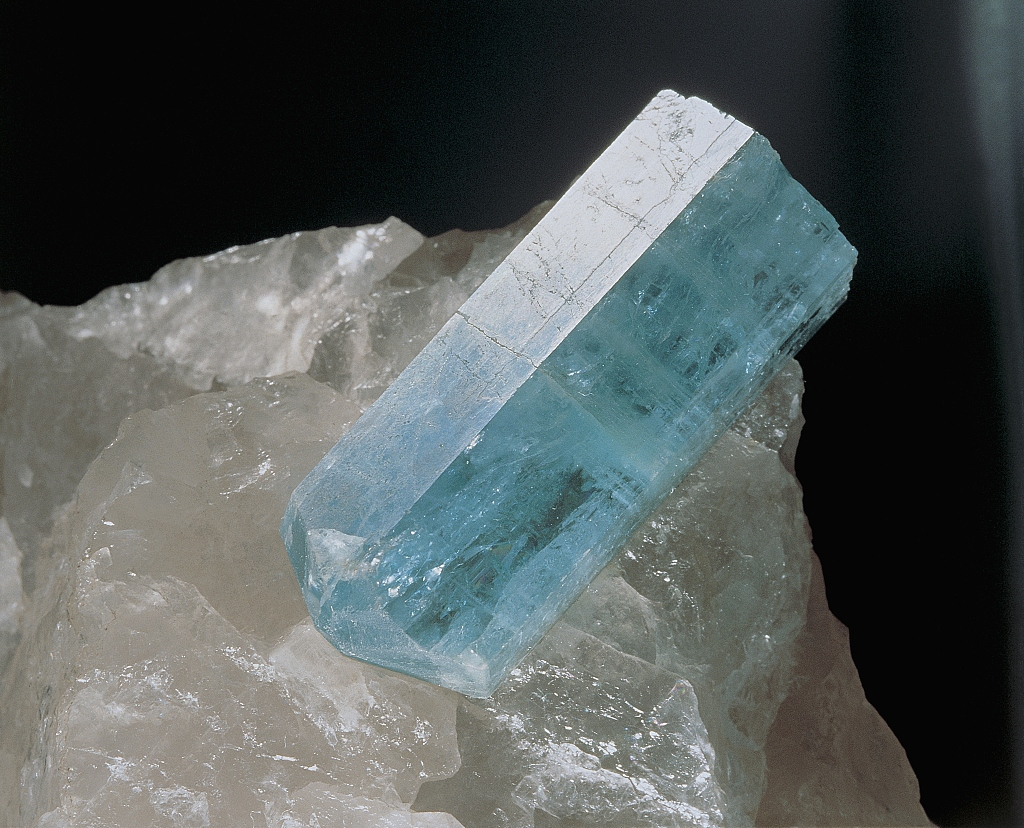Between the 1960s and 1980s, a mysterious place existed in China that was not even marked on the map. The area with the code name "111" was Keketuohai in northwest China's Xinjiang Uygur Autonomous Region.
Keketuohai kept a low profile at that time because it was one of the places in northern Xinjiang rich of non-renewable geological resources, the minerals. Discovered in 1930, the locals firstly mined beryl and muscovite from No. 3 mine vein of Keketuohai to make jewelry. The Irtysh River that originates in Xinjiang and flows into Russia, revealed the place to the world.

The Irtysh River in the canyon /CGTN Photo
The Irtysh River in the canyon /CGTN Photo
In the 1930s, geologists from the Soviet Union found abundant rare metals in the sediment of the middle and lower reaches of the Irtysh River. They inferred that a rare metal ore deposit might exist on the upper reach in Xinjiang. Later, large-scale mining in Keketuohai and nearby areas started with the involvement of the Soviet Union initially.

Altai mountains in autumn /VCG Photo
Altai mountains in autumn /VCG Photo
Located in the Altai orogenic belt, No. 3 mine vein of Keketuohai, as a part of the Altai pegmatite, was formed as a small portion of the thickened immature crust melted during the orogeny. The formation took a pretty long time, running from the Devonian period to the Early Jurassic period. No. 3 mine vein was mainly formed during the Triassic period.

No. 3 mine pit of Keketuohai /CGTN Photo
No. 3 mine pit of Keketuohai /CGTN Photo
Before mining, No. 3 mine vein of Keketuohai was a towering gabbro mountain and its top was around 250 meters higher than the surroundings. After over half a century's excavation, the mountain turned into a huge inverted rock bell at a depth of around 200 meters. Hailed as a highly evolved granite pegmatite rare metal ore deposit, No. 3 mine vein is home to over 80 kinds of minerals, nicely distributed in nine belts.

The profile map of No. 3 mine vein of Keketuohai /CGTN Graphic
The profile map of No. 3 mine vein of Keketuohai /CGTN Graphic
Among those minerals, No. 3 mine vein has the largest Beryllium resources in the world. The minerals excavated here not only paid off some foreign debt owed to the Soviet Union but also contributed to the successful launch of "atomic and hydrogen bombs and man-made satellite" in the 1960s.

Close-up of aquamarine /VCG Photo
Close-up of aquamarine /VCG Photo
Skin of Earth
The Earth, this giant blue marble we live on, is a miraculous existence in the solar system. 4.54 billion years of growth and change of our planet have left marks on its face. From mountains to canyons, from oceans to deserts, from volcanos to glaciers, the skin of the Earth gives us not only marvels but also an ongoing record of the history of the Earth.
Read More:
Skin of Earth: The gorge of marvel
(Cover image provided by CGTN Nature's film crew.)
(If you want to contribute and have specific expertise, please contact us at nature@cgtn.com)